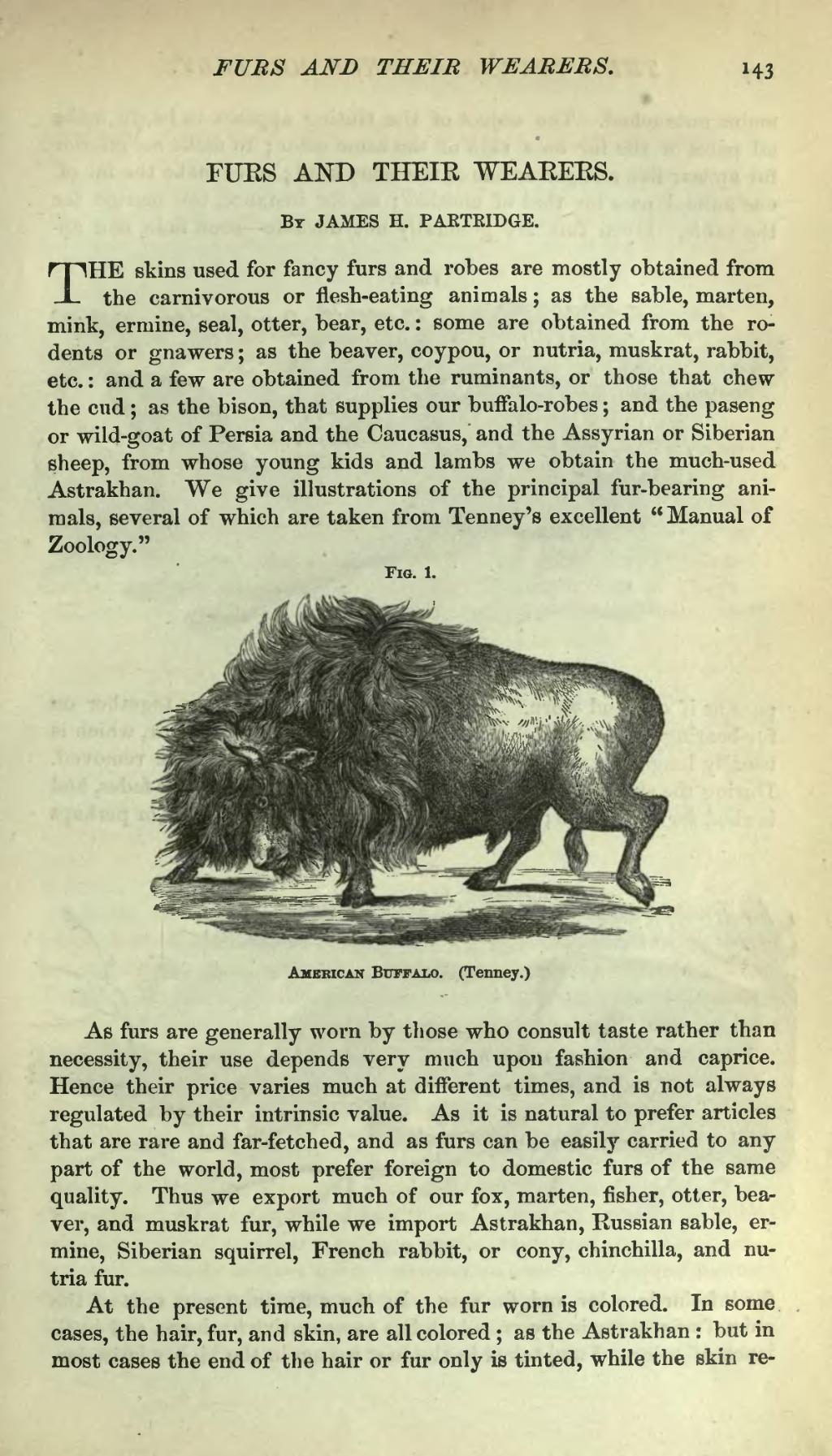| FURS AND THEIR WEARERS. |
By JAMES H. PARTRIDGE.
THE skins used for fancy furs and robes are mostly obtained from the carnivorous or flesh-eating animals; as the sable, marten, mink, ermine, seal, otter, bear, etc.: some are obtained from the rodents or gnawers; as the beaver, coypou, or nutria, muskrat, rabbit, etc.: and a few are obtained from the ruminants, or those that chew the cud; as the bison, that supplies our buffalo-robes; and the paseng or wild-goat of Persia and the Caucasus, and the Assyrian or Siberian sheep, from whose young kids and lambs we obtain the much-used Astrakhan. We give illustrations of the principal fur-bearing animals, several of which are taken from Tenney's excellent "Manual of Zoology."
Fig. 1.

American Buffalo. (Tenney.)
As furs are generally worn by those who consult taste rather than necessity, their use depends very much upon fashion and caprice. Hence their price varies much at different times, and is not always regulated by their intrinsic value. As it is natural to prefer articles that are rare and far-fetched, and as furs can be easily carried to any part of the world, most prefer foreign to domestic furs of the same quality. Thus we export much of our fox, marten, fisher, otter, beaver, and muskrat fur, while we import Astrakhan, Russian sable, ermine, Siberian squirrel, French rabbit, or cony, chinchilla, and nutria fur.
At the present time, much of the fur worn is colored. In some cases, the hair, fur, and skin, are all colored; as the Astrakhan: but in most cases the end of the hair or fur only is tinted, while the skin re-
